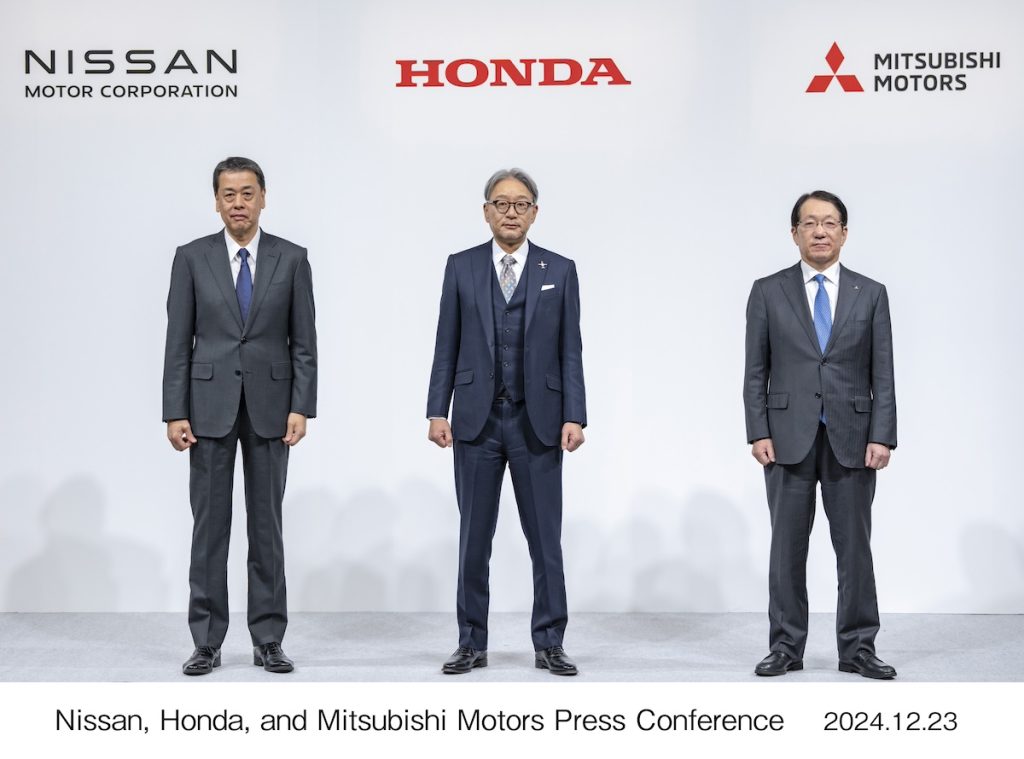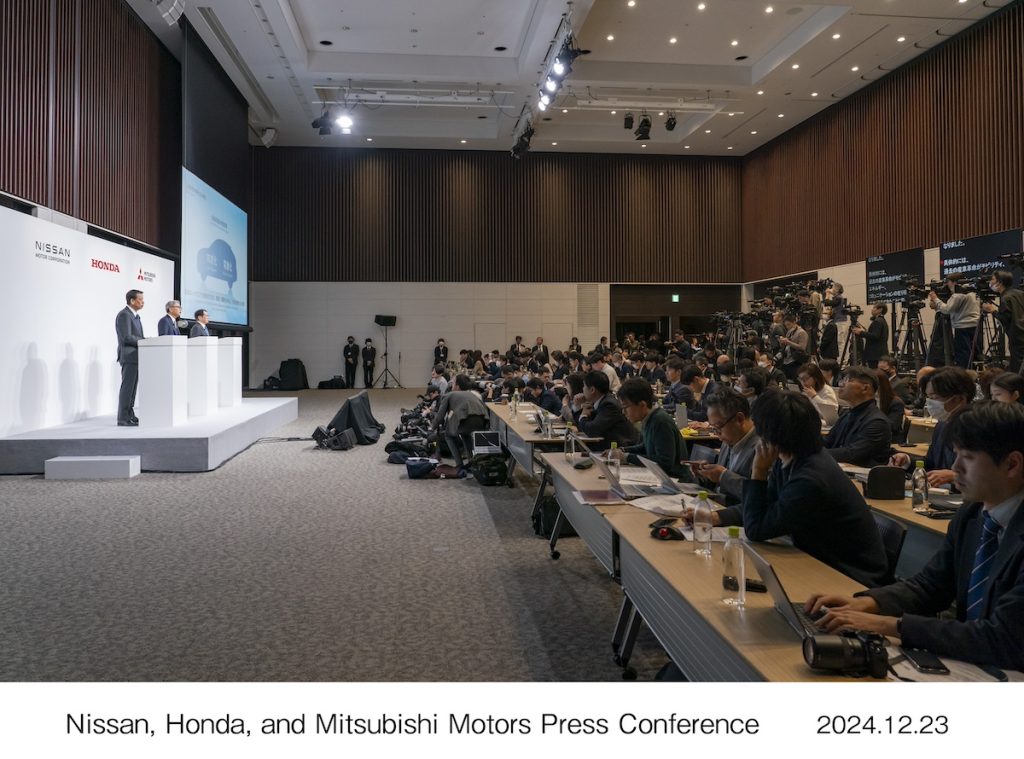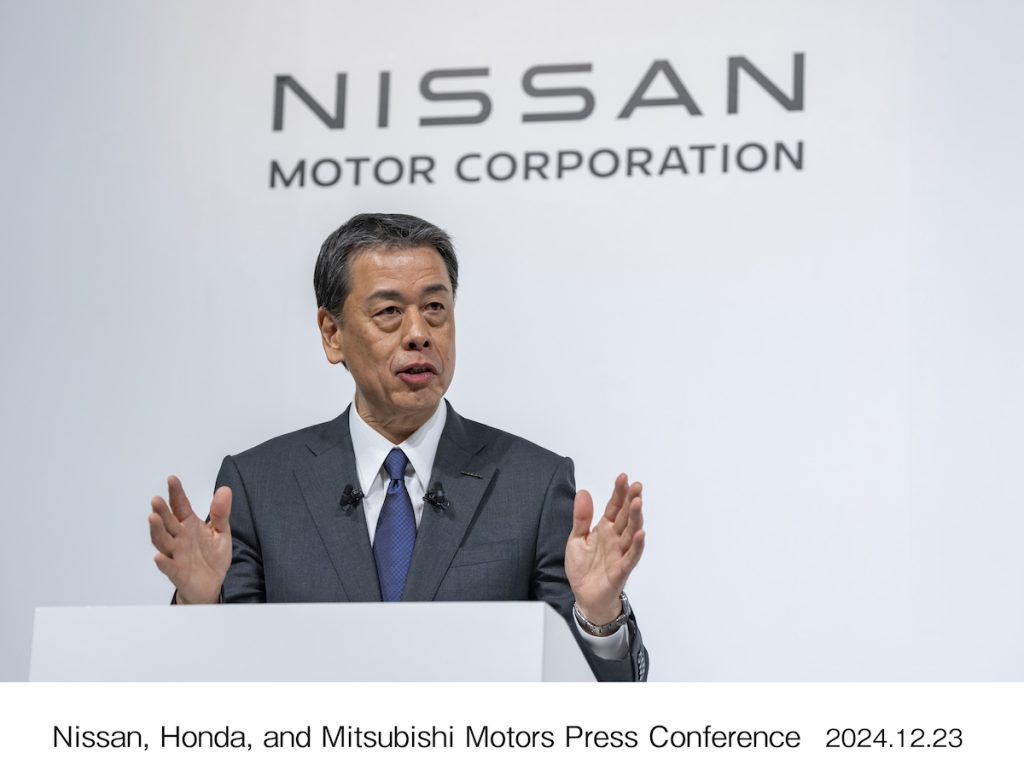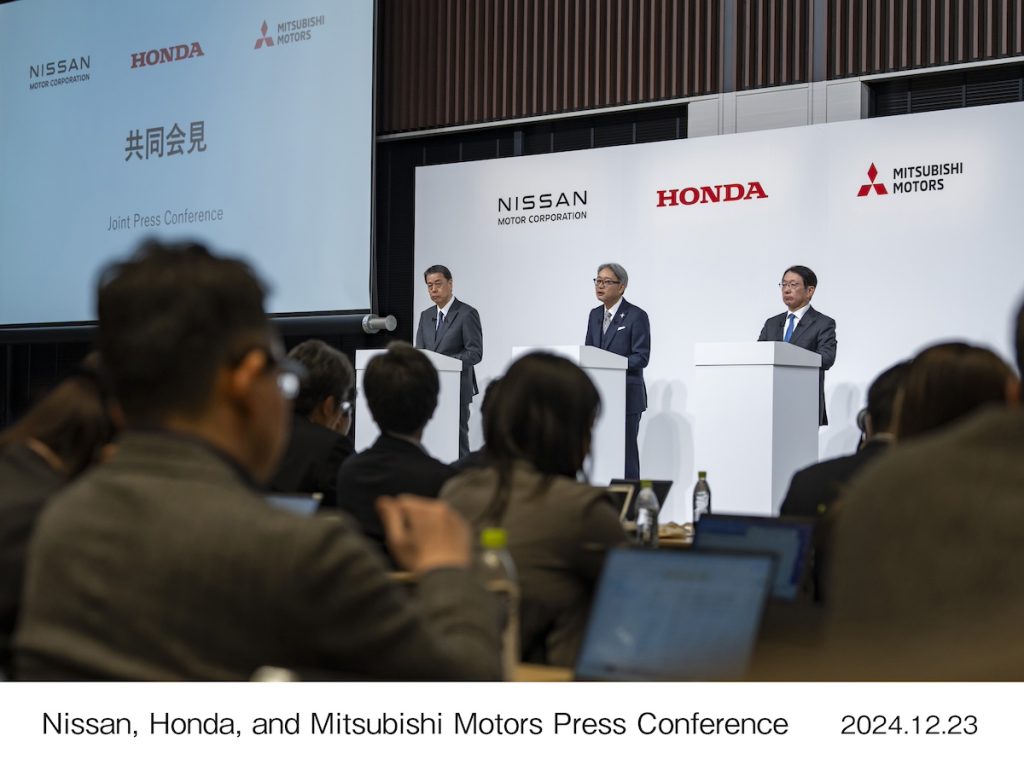A few days before Christmas, Nissan, Honda, and Mitsubishi announced that they are in discussions to form a joint holding company, signaling a potential shake-up in the global automotive industry. During a joint press conference, the CEOs of these automakers signed a formal Memorandum of Understanding (MOU) and shared preliminary details of the merger talks, focusing primarily on Honda and Nissan. Mitsubishi’s involvement appears limited for now, raising questions about its future role.
The primary objective of the merger is cost efficiency. Shared production lines and standardized platforms are expected to lower development expenses and accelerate time-to-market for new models. The companies also plan to integrate their sales finance operations to improve efficiency and leverage their collective purchasing power to reduce costs further.

A significant focus is on attracting top engineering talent, particularly in electrification. Both companies are committed to advancing software-defined vehicles, hinting that future models will share technological frameworks. This synergy is seen as essential for competing in the evolving automotive landscape.
To address potential overlaps in product offerings, Honda CEO Toshihiro Mibe emphasized that by the late 2020s, outdated or redundant models would be either updated or phased out, ensuring distinct brand identities. This timeline aligns with the expected completion of the merger.

Among the three automakers, Honda is the most financially robust, with a market value significantly surpassing those of its potential partners. Mitsubishi, on the other hand, has faced prolonged struggles despite a solid financial standing bolstered by its stake in banking. Nissan boasts a solid product portfolio but has lagged in adapting to the electrification wave sweeping the industry. Some industry observers suggest national pride may be a driving factor, with Japan’s government potentially encouraging Honda to support its compatriot automakers. Former Nissan CEO Carlos Ghosn has criticized the talks, calling them a result of Nissan’s desperation and likening the merger to a “disguised takeover” by Honda. Despite such speculation, the discussions remain preliminary, with no binding commitments yet made.
Honda’s stronger financial position positions it as a leader in the proposed joint entity, which is slated to be listed in August 2026. Honda would nominate most of the directors and executives, ensuring its strategic priorities guide the new organization. However, Honda’s participation is conditional on Nissan demonstrating significant progress in its turnaround efforts.

Nissan faces critical challenges, including its delayed adoption of hybrid technologies. Streamlining operations and improving market responsiveness will be vital for Nissan’s inclusion in the merger. While existing partnerships with Renault and General Motors will continue for now, Nissan must align with Honda’s vision to secure its role.
Key milestones in the merger process include:
- December 23, 2024: Changes to the board of directors and signing of a formal MOU.
- June 2025: Execution of a definitive agreement outlining the share transfer plan.
- April 2026: Shareholders’ meetings to approve the agreement.
- August 2026: Finalization of the merger and delisting from the Tokyo Stock Exchange.

For Mitsubishi, the merger remains a tentative proposition. The company plans to observe Honda and Nissan’s progress before committing to deeper involvement. Meanwhile, Nissan must prove its viability as a partner by meeting Honda’s expectations for operational improvement. If successful, the merger could create a formidable entity capable of competing in the electric vehicle market. Conversely, failure to meet efficiency targets or adapt to market changes could derail the plan, forcing Honda to reassess its position and leaving Nissan’s future uncertain.
The proposed Nissan-Honda merger represents a bold step toward reshaping Japan’s automotive landscape and, by extension, the global industry. While the potential rewards are significant, so are the risks. The automotive world will be watching closely as these talks progress, with the possibility of a powerful new player emerging by the decade’s end. For now, the story remains one of ambition tempered by uncertainty.

